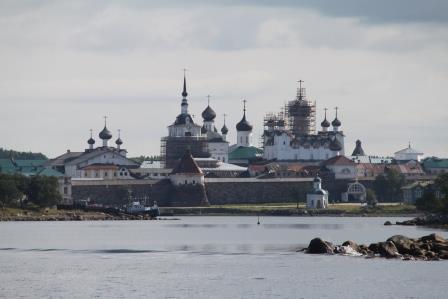[Part 2 of 14. Solovki 2013]
I am heading to the Solovetskie Islands as part of an international network of scholars from six universities in the United States, United Kingdom, and Russia studying the environmental history of Russia. Spearheaded by David Moon of the University of York (UK), the three-year project, funded generously by The Leverhulme Trust in the UK, is tasked to explore Russia’s Environmental History and Natural Resources.
Read more about the project here: http://www.york.ac.uk/history/research/majorprojects/russiasenvironmentalhistory/
A combination of field trips, on-site research, conferences, and publications, the project is designed to expand significantly our understandings of Russian environmental history and resource use—topics that are of tremendous importance to humanity today. Russia, with its vast landscapes, forests, water reserves, minerals, and oil and gas, will be a determining player in how our planet and the humans on it change and live in the coming years.
And environmental history—an exploration of how humans have intersected with the non-human world in the past—is very important to making sense of the world today. Historians explore change and continuity over time and the ways in which humans have both created that change and responded to it. There seems little doubt that our climate and our environment will anything but static in the coming years. How we as a species respond to those transformations will be crucial to our fate and the future of the planet. And the insights that historians can give about how change occurs and how humans react to change will be essential.
I’m honored and excited to be a part of this project. Over the coming years, a core of scholars plus many invited guests from the six universities will travel to see three of the most interesting ecological and human sites in the former Soviet Union: the Solovetskie Islands, Chernobyl, and Lake Baikal. At each site we will hold a conference, present fresh research, collect data, and, through field research, explore the ecological histories of these sites. We’ll finish up with a final meeting and conference at the University of York in England in 2016.
The Network offers a chance to work with scholars from different national backgrounds and different scholarly disciplines. Working together, we will learn a great deal more and achieve a great deal more than we could individually.
And we will approach the study of history differently from usual. In addition to the standard historical tools of hours in libraries and archives analyzing old documents, we will spend time in the field together. Environmental history, more than any other historical subfield, can’t solely be studied from a desk. We need to get our boots muddy, see the sites, smell the smells, clamber over rocks, get bitten by mosquitoes, and perhaps wander through a little radiation.
The six universities involved are:



